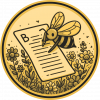I'm fresh off my MEM/MBA degrees building a startup called EarthScape that is focused on assisting landowners in the switch from turf grass lawns (the largest USA irrigated monoculture and biodiversity dead zone) to native plants. The idea is to provide them with the tools they need to know which plants to grow in their ecoregion.
I need help with:
- What are the best data sources to ensure proper plant recommendation (right now I'm focused on plant databases that provide an API)
- What other aspects should I be considering when recommending plants - I want to be sure not to overlook anything
- Besides private market funding, are there additional funding opportunities to be leveraged?
- Any other ideas on how to make this valuable and cost effective?
Software platform features will include:
- personalized recommendation of plants based on region and preferences
- visual representation of yard for planning landscape
- biodiversity score for users' yards based on what they are growing
- maintenance schedule that indicates what should be done during each plant stage
- community platform to connect with others who are "rewilding" their properties
- Eventually (not in MVP) - photo integration to determine species, track what is growing, flag invasives
- Eventually (not in MVP) - notifications of climate extremes, migratory data, other more advanced biodiversity data
- Eventually (not in MVP) an integrated marketplace that is connected to local native nurseries, allowing for pre-orders that can help ease the supply / demand mismatch we're seeing in the native plant market right now.
Business Model: Subscription priced around $10-15/month. There is a free version with significantly reduced functionality.
Ultimate vision and goal: Combat the biodiversity crisis that is suburban sprawl and change the way people fundamentally understand and interact with the land around them.
Open to having any feedback or conversation around this!! Please feel free to reach out here or email me at colleen@getearthscape.com. Thank you!
EarthScape
EarthScape helps homeowners transform their lawns with native plants and eco-friendly landscaping solutions. Get personalized recommendations based on your yard’s conditions, save time and water, and create a sustainable, wildlife-friendly space.
23 September 2024 7:00pm
I wish this were available years ago. I've found it surprisingly difficult to get good advice on native plants - to this day it's still a struggle to even identify the plants on my property and determine if they're native or not. Especially grasses, which are apparently difficult even for experts.
What other aspects should I be considering when recommending plants
- Plant availability is a key aspect. Where are the native-plant nurseries? What do they stock?
Shipping plants is of course an option, but the farther the shipping the less likely it is that the plants in question are appropriate, given natural local species (and subspecies!). Local sourcing (of seeds) is important (and not every nursery pays attention to this, even well-meaning native-plant ones).
There's also concerns with transporting pests, when moving plants non-trivial distances. For example, I'm told it's already illegal in California to transport untreated wood (i.e. live or dead plants, including firewood and chip-bark) significant distances, yet most nurseries blatantly violate such laws. And whether it's illegal or not in any specific jurisdiction, it's a very bad idea.
In an ideal world one would be able to see real-time inventory of what's in stock in local native-plant nurseries, and what's soon coming into stock (seasonal availability, happenstance of production schedules, etc). And be able to put together & order a full flora BoM, even if it spans multiple nurseries. - Nurseries might wish to actively participate, to help conform demand to supply - some species might have a bumper year for seedlings while others do unexpectedly poorly, so having tools like EarthScape promote species with a surplus might help reduce waste (good environmentally, and financially for the nurseries).
- Don't overlook volunteer / non-profit nurseries (e.g. CSPF's). Many of these do an atrocious job of promoting themselves - even when they give the plants away for free! - and often have no meaningful online presence. Yet, they're a fantastic source of hyper-local plant species. If there's a way to integrate them too, that'd be huge.
Similarly, there are various government and non-profit nurseries which aren't strictly open to the public, but which can sometimes provide plants to the public (e.g. the vagaries and stupidities of government can mean healthy seedlings rot in the nursery rather than actually being planted; better to quietly give them away). Many of these nurseries deal specifically with endangered or threatened species (e.g. Giant Sequoias) that need help most urgently. - Factor in the status of each species; is it endangered? Threatened? Those should perhaps be promoted a little more.
Perhaps consider secondary effects in that ilk - e.g. does this 'unthreatened' plant species nonetheless critically support a threatened animal species? - Relatedly, be very careful about critical nursery plants, e.g. Common Milkweed. I see that particular example in your mockup photos on your website. While it is critical that more be planted in North America, it's crucial they be planted in the right places otherwise they actually harm Monarchs rather than helping them (e.g. if planted too close to the coast north of Santa Barbara or otherwise in the wrong micro-climate, they encourage Monarchs to forgo or delay migration, which tragically can lead to their death - in California, at least; it varies a lot depending on locale, and not all Monarchs migrate, either).
- Plant size has proven a challenge, in my experience. Documentation & quantitative descriptions of native Californian plants are surprisingly sparse and lacking nuance; "grows six to nine feet" is commonly as good as you get, where in reality the variance can be virtually 100% of that based on specific planting conditions. For people particularly interested in the aesthetics of their garden, this is a big challenge.
One way to help mitigate this might be clear information on how well each species tolerates pruning. Most plants can survive some, but while some might regrow just fine, others may look permanently disfigured and "mangy". Prunable plants could be deliberately planted "too" densely with the intent to prune them into the desired space, rather than risk plantings turn out too sparse. Which plant species best fight other, specific plant species (including other natives)?
e.g. on my property there's literally acres of [native] blackberries, which are nasty buggers that take over and crowd out virtually all other species (and are a big fire danger). Some native species are relatively resistant to blackberry encroachment, while others immediately fold and die. While the blackberries are native, they create a monoculture ecosystem which does a poor job of supporting native fauna. They're also not really native - at least not in such density and numbers - to my region (traditionally redwood & oak forest).
In a non-trivially-sized space, it's impractical to manually intervene (e.g. physically remove all the blackberries). Undesirable species' need to be combatted through more scalable means, like utilising plants that will fight back. Otherwise, folks will likely get discouraged by the excessive manual labour required to reform their garden - especially if they're dealing with aggressive invasive plants - and give up.
- Fire danger. Both from a species selection perspective (e.g. don't recommend highly flammable plants in fire-prone regions) and an arrangement perspective (e.g. don't create ladders, ensure your floorplanning tool specifies clear zones around structures, etc).
Besides private market funding, are there additional funding opportunities to be leveraged?
- While it may be difficult in the beginning, I suspect, there might eventually be corporate partnership possibilities. Consider, for example, that many pervasive chain hardware stores (e.g. Home Depot) have nursery sections, or at least sell punnets of bulbs / seedlings and seed packets. In my experience those are almost exclusive non-native species, even in places (like California) which are relatively environmentally conscious. Conceivably some of these stores would be willing to reform, if they felt it were commercially viable (i.e. there were enough awareness of and interest in native plants).
Any other ideas on how to make this valuable and cost effective?
- What's your business model? It's unclear from your post & website whether this is a for- or non-profit, and to what extent it will be open-source or -API.
visual representation of yard for planning landscape
- Floorplans don't do much for me, personally, since in real life I never see my garden from a satellite. What does help for planning is seeing example gardens - seeing what's possible, what combinations or arrangements work well in practice, etc.
It's also important to showcase success stories in order to convince people to switch to native plants to begin with. In California, for example, even the locals tend to believe that native means "brown" (and therefore not particularly appealing). But there are many native plants that are colourful, flower for many months at a time in huge blooms filled with happy insects, and flower more vigorously and reliably than invasive species.
community platform to connect with others who are "rewilding" their properties
Tangentially, what I often wish for is some kind of community co-op that can get a bunch of people together to overhaul a specific property at a time - a bit like volunteer working days at local & state parks. Many hands make clear progress, and actually seeing that meaningful change can be achieved is critical for believing in it and in turn actually doing it. Something to think about, perhaps, as part of your community platform aspect.

Frank van der Most
RubberBootsData
23 September 2024 7:06pm
Hej Colleen, what a great idea and interesting questions. Here are my two cents on two questions
Besides private market funding, are there additional funding opportunities to be leveraged?
Are you not going to ask a subscription fee? I didn't see it on the website. Typically, one would expect a free and not entirely useless 'bait' subscription and paid-for subscriptions.
I'm guessing that the seed and plant producers of the alternative plants may be interested in sponsoring.Perhaps you can find a way for landscaping/garden maintenance companies to take multi-plot subscriptions for their clients?
- Any other ideas on how to make this valuable and cost effective?
I don't know, but I'd go with what land owners find important. Most of them probably don't give a dime about nature loss, as long as their lawn looks neat. But what else would be interesting to them? A lower water bill?
30 September 2024 10:06pm
This sounds a similar tool you may want to check out - Ecodash.ai











Wade